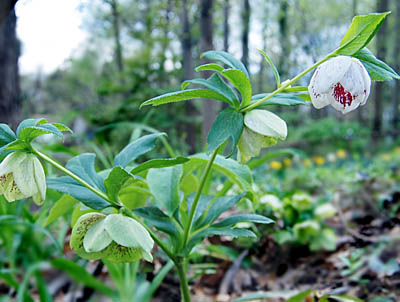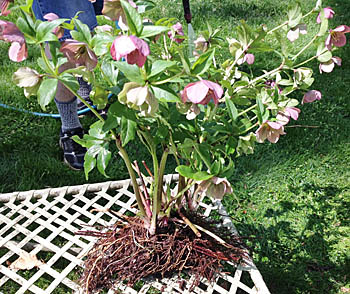Hellebores: Divide and Multiply
By Carmine Carosella, Fairfax Master Gardener
You’ve seen all those fancy hellebores at the garden shops, and they set your heart aflutter. Their fancy prices, however, rip your budget apart. What’s a gardener to do? Well, one easy and inexpensive way to increase your collection is to divide an existing plant.

This hellebore was divided in the fall, and it was blooming the following spring

Hellebore dug in spring after removing the dirt with a water spray
Carefully dig the hellebore with a large ball of soil, starting about 10 inches outside the ring of foliage and digging 12 inches or so deep. Now comes the key step: Knock off as much of the soil as possible, and then spray off the remaining soil with water from a hose. The plant’s rhizome and the individual crowns should become clearly visible.
Examine your plant to see where its natural divisions lie. Each targeted division should include leaves, a piece of the rhizome, and fresh roots. Using a sharp knife with a long blade, cut through the rhizome at the proper spots, and then carefully tease apart any entangled roots.

Four divided hellebores from one plant
Share the plants with friends or just increase your own collection. The divided hellebores will soon conquer your heart!
References
Hellebores: Near Perfection in a Plant, Marsha Goldberg, Fairfax Gardening
Hellebores: A Comprehensive Guide, by Burrell & Tyler, Timber Press Inc.